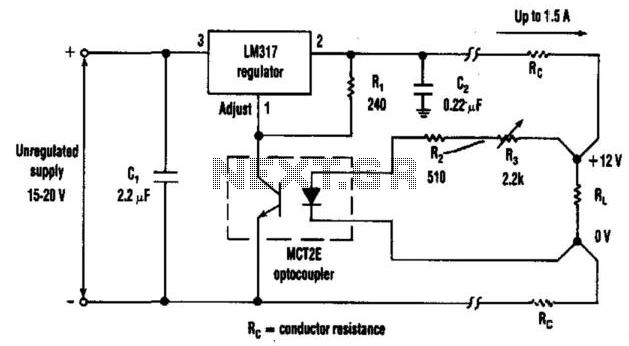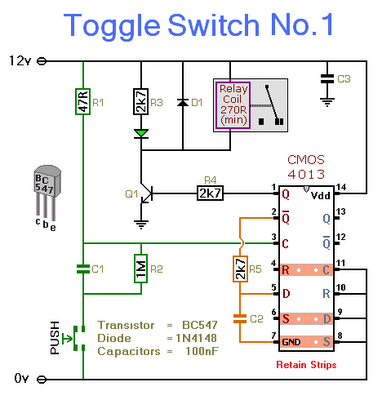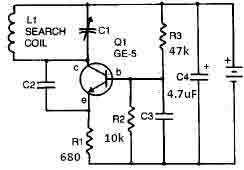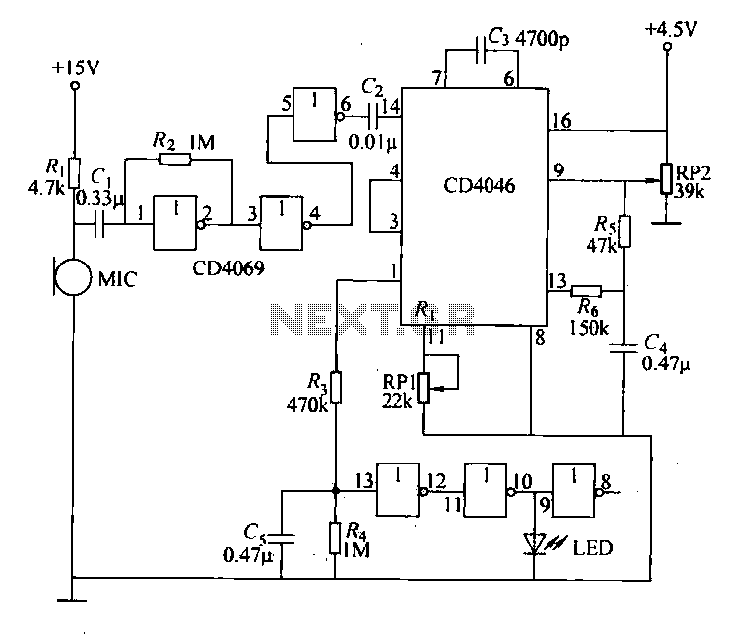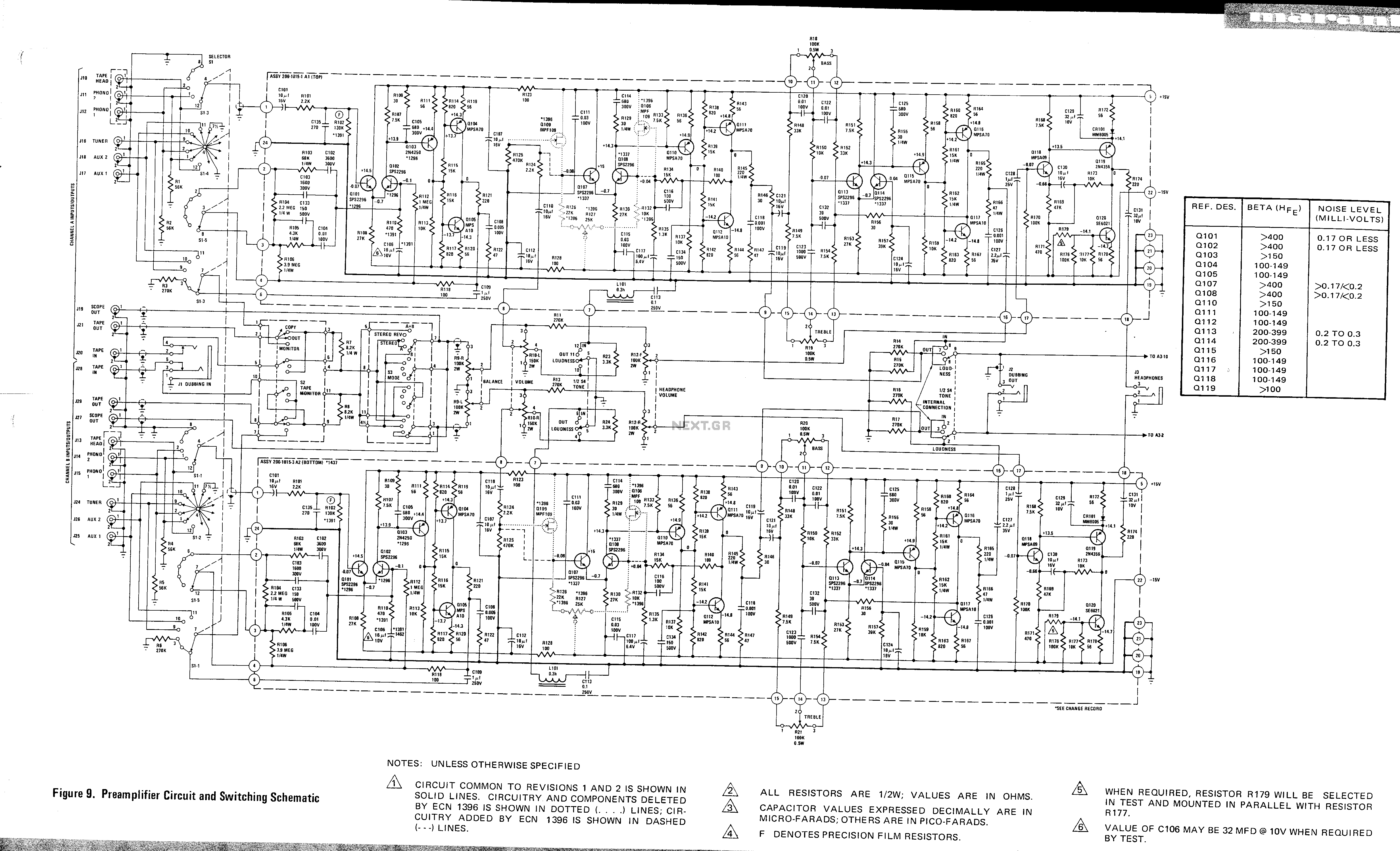
BMW R Series Motorcycle Regulator Schematic
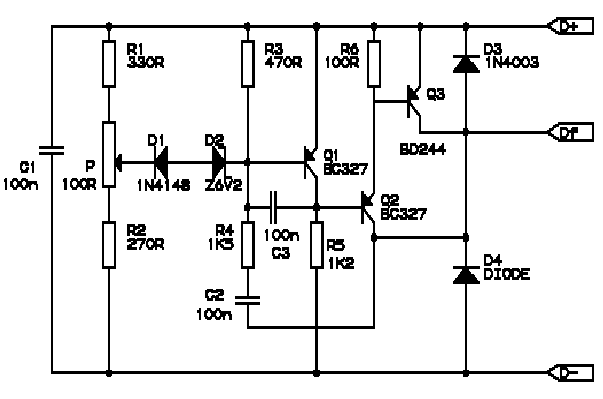
Correctly adjusted, the voltage on the pot wiper is slightly less than half D+ (appx. 0.47*D+) and Q1 will conduct if (D+)-(Vp) > 6.2 + 0.7 + 0.7, or 0.53*(D+) > 7.6V, (D+) > 14.3V. If D+ is lower than 13.7V, Q1 will not conduct, Q2 will get driven via R5, and Q3 will conduct. Df will carry a voltage. When D+ rises, Q1 will start conducting, Q2 will get pinched gradually, and so will Q3. Voltage on Df will drop.
The described circuit involves a potentiometer (pot) that is used to adjust the voltage at its wiper, which is connected to a voltage source denoted as D+. The critical threshold for the operation of transistor Q1 is established by the relationship between the voltage at D+ and the voltage at the pot wiper (Vp). When the voltage at D+ exceeds certain levels, specifically when the difference (D+ - Vp) exceeds 7.6V, Q1 begins to conduct, indicating that the circuit is in an active state.
Transistor Q2 is influenced by the state of Q1 and is activated through resistor R5 when D+ falls below 13.7V. In this case, Q1 remains off, allowing Q2 to conduct, which in turn activates Q3. This cascading effect of transistors highlights a feedback mechanism that regulates the circuit's response based on the variations in D+.
The voltage across diode Df is also a significant parameter in this circuit. As D+ increases, Q1 starts to conduct, which causes a gradual decrease in the conduction of Q2 and Q3. This interaction results in a drop in the voltage across Df, indicating a dynamic adjustment in the circuit's operation based on the input voltage level at D+.
The overall design showcases a voltage regulation or control circuit that utilizes the properties of transistors and resistors to manage the flow of current and voltage levels effectively. Proper adjustment of the potentiometer is essential for ensuring that the circuit operates within the desired parameters, particularly in applications where voltage thresholds are critical for performance.Correctly adjusted, the voltage on the pot wiper is slightly less than half D+ (appx. 0.47*D+) and Q1 will conduct if (D+)-(Vp)>6.2+0.7+0.7, or 0.53*(D+) > 7.6V, (D+) > 14.3V. If D+ is lower than 13.7V, Q1 will not conduct, Q2 will get driven via R5, and Q3 will conduct. Df will carry a voltage. When D+ rises, Q1 will start conducting, Q2 will get pinched gradually, and so will Q3. Voltage on Df will drop. 🔗 External reference
The described circuit involves a potentiometer (pot) that is used to adjust the voltage at its wiper, which is connected to a voltage source denoted as D+. The critical threshold for the operation of transistor Q1 is established by the relationship between the voltage at D+ and the voltage at the pot wiper (Vp). When the voltage at D+ exceeds certain levels, specifically when the difference (D+ - Vp) exceeds 7.6V, Q1 begins to conduct, indicating that the circuit is in an active state.
Transistor Q2 is influenced by the state of Q1 and is activated through resistor R5 when D+ falls below 13.7V. In this case, Q1 remains off, allowing Q2 to conduct, which in turn activates Q3. This cascading effect of transistors highlights a feedback mechanism that regulates the circuit's response based on the variations in D+.
The voltage across diode Df is also a significant parameter in this circuit. As D+ increases, Q1 starts to conduct, which causes a gradual decrease in the conduction of Q2 and Q3. This interaction results in a drop in the voltage across Df, indicating a dynamic adjustment in the circuit's operation based on the input voltage level at D+.
The overall design showcases a voltage regulation or control circuit that utilizes the properties of transistors and resistors to manage the flow of current and voltage levels effectively. Proper adjustment of the potentiometer is essential for ensuring that the circuit operates within the desired parameters, particularly in applications where voltage thresholds are critical for performance.Correctly adjusted, the voltage on the pot wiper is slightly less than half D+ (appx. 0.47*D+) and Q1 will conduct if (D+)-(Vp)>6.2+0.7+0.7, or 0.53*(D+) > 7.6V, (D+) > 14.3V. If D+ is lower than 13.7V, Q1 will not conduct, Q2 will get driven via R5, and Q3 will conduct. Df will carry a voltage. When D+ rises, Q1 will start conducting, Q2 will get pinched gradually, and so will Q3. Voltage on Df will drop. 🔗 External reference
